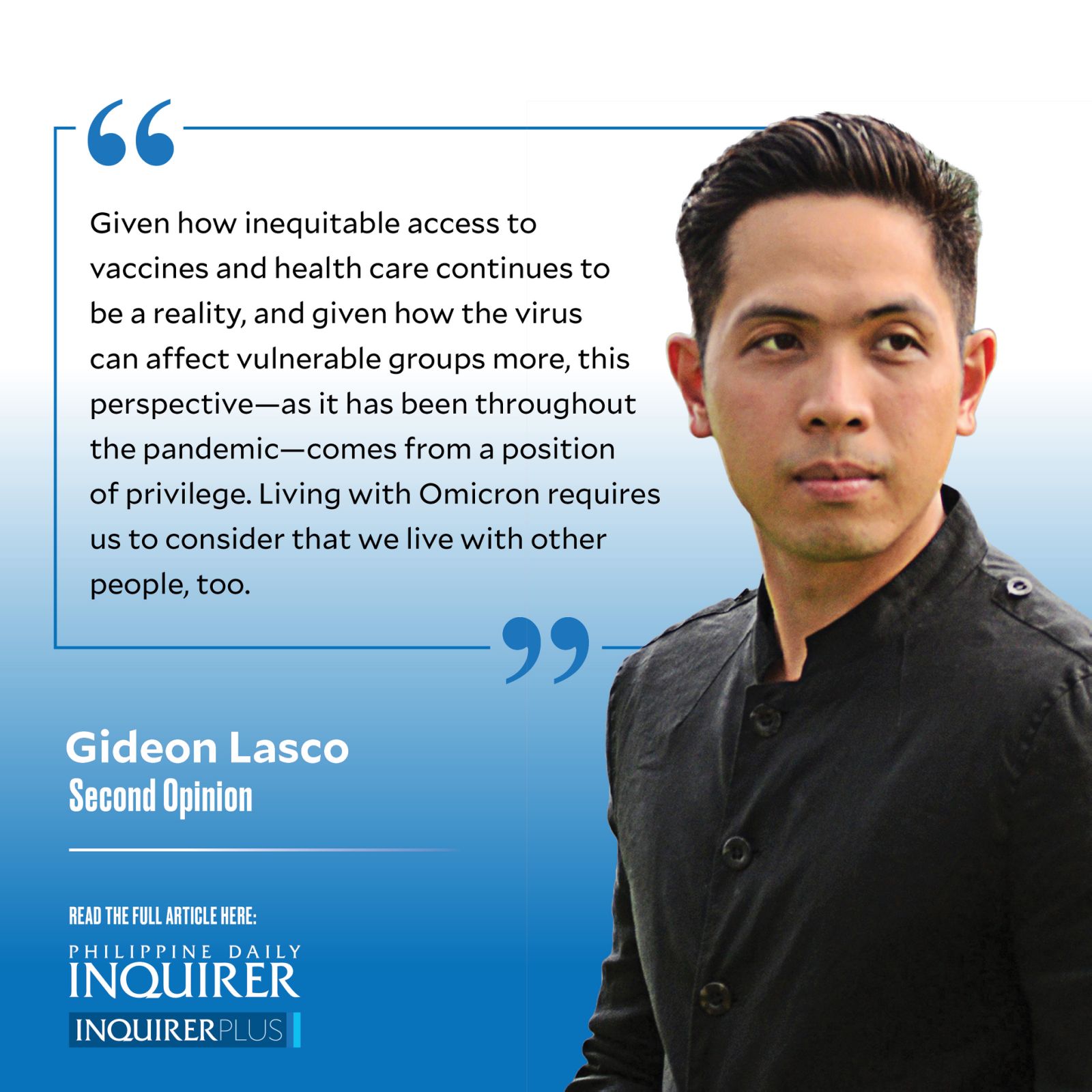Living with Omicron
Phoenix, Arizona—Doubtless due to the Omicron variant, the past few weeks have seen a dramatic rise in COVID-19 cases in many parts of the world, including the Philippines and the United States. But here in Arizona, one does not feel that way with everyone going about their everyday lives mostly without masks or restrictions, whether indoors or outdoors.
The rules and customs vary by state. In California, an indoor mask mandate was reinstated on Dec. 15, and in some restaurants, I was asked to show my vaccination card. On the other hand, my brother who lives in Texas avers that masks are even rarer; if anything, the mandate is that no one can require masks.
Article continues after this advertisementRegardless of state, however, anywhere in America the rules continue to be far more relaxed compared to the Philippines, or even the two other countries I’ve visited during the pandemic: Mexico and Peru. When I was last in the US in July, things were even looser, but that was when the cases had reached a nadir, when Joe Biden could declare “Independence from COVID-19” on the Fourth of July. The Delta variant surge, which saw over 2,000 people dying daily at its peak, did little to change people’s minds, and today, with an even more contagious (albeit supposedly milder) variant, major cities still pushed through with their New Year celebrations (if with some restrictions, like New York City celebrating its famed ball drop with only 15,000 people).
Perhaps the most visible face of this attitude are the people who adamantly refuse to get vaccinated (let alone boosted), wear masks, or follow any kind of public health protocols, claiming that such mandates are against America’s sacrosanct values of individual freedom and libertarianism (“Mas pasaway ang mga tao dito,” as a Phoenix-based doctor puts it). Many are also likely influenced by the way the issue has been politicized, and if nothing else, of peer pressure, given that, as I have seen for myself, one could feel like an odd man out by wearing a mask in settings—for instance, in the evangelical church I joined my family in attending where nobody else wore a mask.
But part of it is also due to people’s confidence that being vaccinated and boosted means that getting infected would only cause, at the worst, some minor illness. And, in any case, they could access good health care. “I still wear a mask indoors, but I can’t live my life based on the very small risk that I’m gonna get hospitalized from Omicron,” one East Coast-based Filipino-American doctor who lives alone told me. Especially against the backdrop of “pandemic fatigue,” it is hard to argue against such individual calculus of risk, even as from a public health perspective, such decisions mean more chances of the virus spreading. (Tellingly, more people in the US have died of COVID-19—almost 850,000—than anywhere else in the world.)
Article continues after this advertisementThe coming weeks will reveal how Omicron will unfold. Some see hope in South Africa’s experience that the surge will be faster and the infection milder (at least for the vaccinated). But, as others caution, such assessments, even if seemingly corroborated by the outbreak of trangkaso in the Philippines, can overlook other important outcomes like “long COVID” and the strain on the health care system. As Dr. Kris Tan, a Philippine General Hospital pulmonologist, told me, “Aside from having so many sick patients at the same time, ang nakaka-stress ay yung nauubos ang workforce.”
Then there are many other variables, both known and unknown, that can affect the magnitude of a surge, from a country’s demographic profile to its vaccination rates and the kinds of vaccines that were administered. And it can disrupt people’s lives and livelihoods anew, as well as resurrect spectacular but irrational responses. Even as I write this, those ridiculous face shields are once again being mulled by the Philippine government; it will be a pity if children are locked down once again, forced indoors with their adult counterparts when the outdoors offer safety to everyone.
As in the US, those who have been fully vaccinated and boosted in the Philippines may be able to hold some confidence that they can live through the surge and continue the slow march back to a semblance of normalcy. But given how inequitable access to vaccines and health care continues to be a reality, and given how the virus can affect vulnerable groups more, this perspective—as it has been throughout the pandemic—comes from a position of privilege.
Living with Omicron requires us to consider that we live with other people, too.
—————-
For more news about the novel coronavirus click here.
What you need to know about Coronavirus.
For more information on COVID-19, call the DOH Hotline: (02) 86517800 local 1149/1150.
The Inquirer Foundation supports our healthcare frontliners and is still accepting cash donations to be deposited at Banco de Oro (BDO) current account #007960018860 or donate through PayMaya using this link.

















